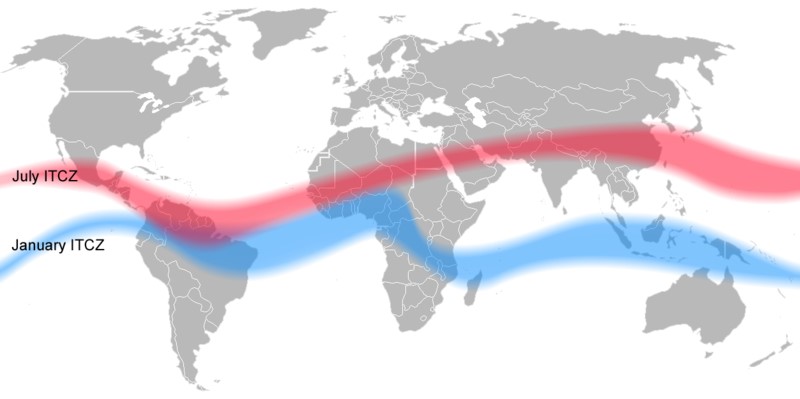
When we say we’re “in the doldrums” we feel depressed, dull and listless. Those with Seasonal Affective Disorder (SAD) — a type of depression related to the change of seasons — may be in the doldrums already though it’s only late August. They’re aware that Pittsburgh has lost an hour and 48 minutes of daylight since the June 21 solstice.
The real doldrums, whose fancy name is the Intertropical Convergence Zone (ITCZ), is dull and listless too. The ITCZ or “itch” is a band of monotonous calm where the north and south trade winds converge. As the winds meet each other they travel straight up, causing windlessness on the surface and clouds above. The calm is a real hazard for sailors who depend on wind to power their ships.
The lack of wind doesn’t mean the weather is beautiful. Rising heat and moisture lead to stacks of clouds, frequent thunderstorms and heavy rainfall. Some of the storms spin away from the doldrums as tropical depressions that become hurricanes.
You can see the ITCZ from satellite as a band of clouds near the thermal equator (photo at top). At this time of year there may be a dense circle in the line of clouds, a newly forming tropical depression.
The ITCZ moves north in the summer especially over land (which is warmer) and south in the winter, causing rainy and dry seasons in the tropics. The map below shows where the ITCZ usually goes; its path in the Pacific is affected by El Nino.

Though the doldrums are deadly calm they can generate too much excitement (storms). Read more about them from the sailor’s point of view at: Seven things you need to know about the Doldrums.
(images from Wikimedia Commons; click on the captions to see the original)
My 16 year-old gr daughter is in the doldrums. She can’t be as interested in what her boyfriend says. There is no interest in her classes or consequences. She asked me about this feeling which grips her now.